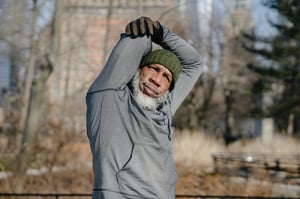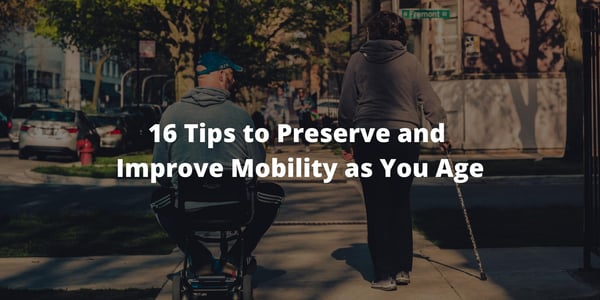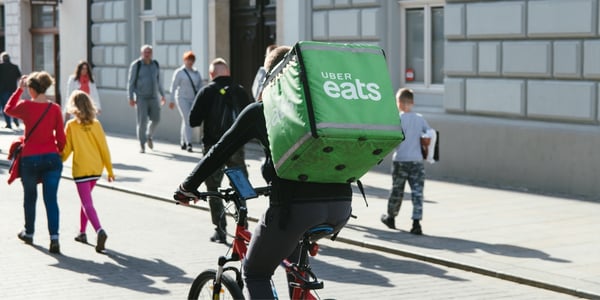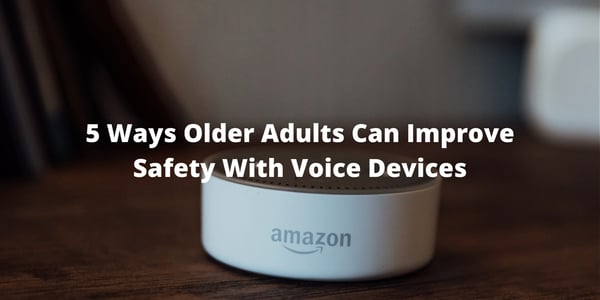Whether you're moving out into a smaller place or if your kids have flown the nest, choosing to...
10 Healthy Muscle Recovery Tips for Older Adults
As we age, our muscles tend to weaken, making it more challenging to maintain an active lifestyle. However, regular exercise is crucial for overall health and well-being, especially for older adults. Exercise helps strengthen muscles, improve flexibility, and enhance balance and coordination, which can reduce the risk of falls and injuries.
But just as important as exercise is proper muscle recovery. Recovering after a workout can help prevent injury and ensure that your body is ready for your next workout. In this blog post, we will share ten healthy muscle recovery tips to help you maximize the benefits of exercise and maintain an active lifestyle. We've got you covered with practical tips to help you recover from your workouts effectively.
Improve Your Muscle Recovery Process
-
Staying Hydrated
Stay hydrated as you do your workouts. Often, people of all ages forget to stay hydrated through their workout plan, which can increase the risk of getting an electrolyte imbalance. Excessive sweating with no hydration can result in conditions like a decrease in blood glucose levels. As a result, the risk of falls and hence muscle injury increases. Try staying hydrated throughout your workout plan.
-
Eating More Lean Protein
Muscles require protein to build up, and this is why you need to improve your intake of protein in your diet if you do any exercise. This becomes especially important in older adults, who have a mainly negative nitrogen balance in their bodies. Try consuming lean meat protein in your diet, such as poultry. It is especially helpful if you have a heart condition and avoid unhealthy fats in your diet.
-
Doing a Cool Down and Warm-Up
 Cooling down and warming up are essential components of any exercise. It is especially true for older adults who have an increased chance of getting a sprain, strain, or injury in their connective tissues due to exercise. Stretching up a little and getting in the "pace" physically helps you prevent injuries. Doing both of them will help you to stay protected from muscle injury. Also, a little stretching here and there will help you with the recovery process.
Cooling down and warming up are essential components of any exercise. It is especially true for older adults who have an increased chance of getting a sprain, strain, or injury in their connective tissues due to exercise. Stretching up a little and getting in the "pace" physically helps you prevent injuries. Doing both of them will help you to stay protected from muscle injury. Also, a little stretching here and there will help you with the recovery process. -
Wearing Medicated Socks
You can wear medicated socks when you are going through your recovery period. Known mostly as compression socks, they help increase circulation in your lower limb that aids in muscle recovery. It helps so by improving the circulation in your lymphatic system, which aids in driving out the excess toxins in your legs, assisting you in recovering from pain. You can wear these socks anytime when you are having your recovery period.
-
Take Enough Recovery Time
You need to make sure you take enough time for your recovery. As a senior, you might want to increase your total rest interval up to double when doing workouts. It will improve the muscle healing process in your body and aid in quick recovery from pain. So, make sure you make the most of it. Older adults need more recovery time to heal from soreness and pain as the muscle synthesis process is significantly low.
-
Opt for Easy Exercises
Try going for easy exercises that don't put you at risk of muscle strain or joint injury. For example, you can go for a simple walk or bicycling that will help you to improve your fitness levels without putting you at risk of developing an injury. What's more, you can also combine these light exercises in your recovery period to keep up your stamina. These exercises will minimize your chance of getting physically injured and improve the overall stamina that you need to improve your health and fight sarcopenia.
-
Consulting a Professional
.jpg?width=300&name=pexels-kampus-production-6922149%20(1).jpg) Try consulting an experienced trainer and a healthcare professional before trying out a physical activity. Some exercises require the complete working of a specific muscle group, such as isolation exercises. What's more, there are some exercises which may increase your heart rate and breathing rate significantly. Also, consult a professional before deciding to increase the intensity of your workouts to avoid any risk and get the time for rest that your body needs.
Try consulting an experienced trainer and a healthcare professional before trying out a physical activity. Some exercises require the complete working of a specific muscle group, such as isolation exercises. What's more, there are some exercises which may increase your heart rate and breathing rate significantly. Also, consult a professional before deciding to increase the intensity of your workouts to avoid any risk and get the time for rest that your body needs. -
Doing Low Impact Exercises
Low impact exercises are helpful for older adults as they don't significantly put pressure on your heart. They aid you in improving your overall performance in your stamina without putting you at risk of your heart health. Search for low-impact exercises such as bicycling and do it in your schedule. You also need to find the muscle recovery time for these exercises. On a general note, these exercises don't require a lot of time for recovery against muscle soreness or pain.
-
Doing Controlled Range of Motion Exercises
Older adults need to look for a range of motion exercises that allow for maximum output with a minimum risk of uncontrolled movement. As a result, you have a decreased risk of getting an injury in your body. To avoid sprains and strains, it is important you take note of the relative degree of freedom of your joint positions. This will alleviate your chance of muscle injury.
-
Working Muscles Differently
If you keep moving or working your muscle at a certain angle, there are chances the overused muscle will become sore and painful. Therefore, it is important to find different ways to bring variations in your exercise and use another muscle group of the same area. For example, when walking, try walking backward a bit so that all muscles of your leg work. It will save your muscles in the front leg from pain and soreness as well. Again, it is about keeping balance so that you don't overwork your muscle in any exercise.
These tips are helpful to use in older adults and aid in improving muscle recovery and lessening the incidence of muscle injury. Older adults are more prone to getting muscle injury or joint injuries in doing different activities while countering sarcopenia. However, they can improve their overall muscle health by taking the help of these tips.






